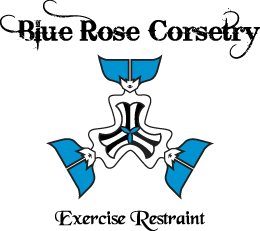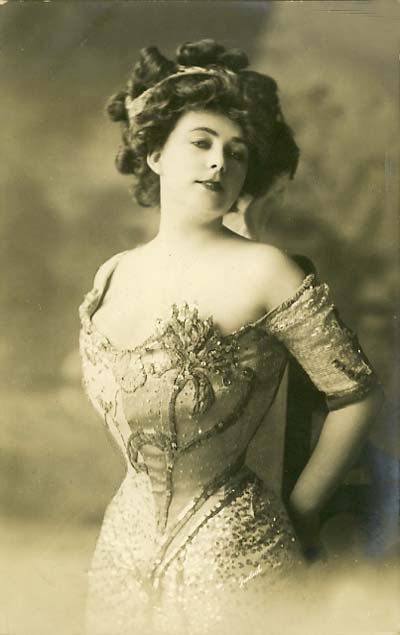Corset care & Info
Corset Care and Instructions
Lacing Up:- Always
loosen the laces so you can easily wrap the corset around your body and
close
the busk. The easiest way to do this is to hold half of the corset in
each hand
and move your hands forward & back in opposite directions while
pulling on
the corset. This will redistribute the corset laces evenly.
- Fasten the busk starting at the second hook from the bottom, work up and close the bottom last.
- Tighten the laces gradually. Start tightening the corset lace by pulling the excess at the bottom up toward the waist, the bow at the bottom should remain tied. Next, tighten the top down to the waist. All the excess should be brought to the waist and the final tightening should be done there, with a large bow in the back.
- Tie off the excess in a double knot at the wait. Wait about 20 minutes and then tighten the corset more if desired. Time, patience and practice makes for good corseting.
- Never tie the laces around to the front of the corset, this can damage the fabric. You do not want to drastically reduce your ribs or your hips as this will cause discomfort.
Undressing: Always loosen the lacing at the back of the corset before trying to open the busk. Failure to loosen enough before opening can cause undue stress on your body and the corset & most likely have you get stuck on a post half way through unfastening! Unfasten the busk gradually, if necessary loosen the back more if you have trouble with the final hook.
After wearing: To prepare your corset for it’s next wearing, take a damp (not wet) cloth to the lining, let the corset air out flat or inside out on a hanger. Blue Rose likes to hang their corsets by the laces over a sturdy plastic or wooden hanger. A gentle spray of Fabreeze is handy if the corset has picked up smoke or other smells.
Cleaning: Blue Rose
Corsetry corsets are
constructed with metal boning, safe to be dry-cleaned. We do not
recommend
cleaning with water as it may cause the steel to rust, and certain
fabrics can
“water mark” and should be dry-cleaned to remain beautiful. Cleaning is
always
best left to the professionals.
For PVC corsets – gently
wiping down with a damp cloth will remove dust
& grime from the face of the corset.
For Leather
corsets – clean with a
leather cleaner or have professionally
cleaned.
Corset linings
cleanliness: Wearing a
thin fitted garment between the corset
and your skin will help protect the corset from perspiration and body
oils,
making dry-cleaning less frequently necessary. There was a reason woman
always
had a chemise under their corsets – it kept them clean! Corset covers
were also
used over the corset as a layer between the corset and the dress.
All
Blue Rose Corsetry
3-layer corsets are designed and constructed to withstand the stresses
associated with tightlacing.
A
2 layer corset if
constructed with Coutil corseting fabric can also be used for
tightlacing.
If you are buying a waist cinche, this cannot be used for tightlacing but can still trim your waist by 2 to 3 inches.



 Coming soon darling!
Coming soon darling!